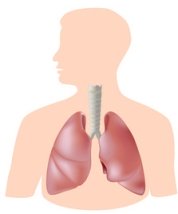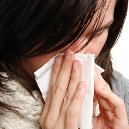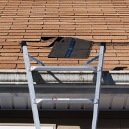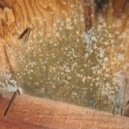Find a pre-screened local mold removal specialist Free Estimate
Find a Mold Specialist Now
Click or Call, Toll-Free 24/7
Pulmonary Hemorrhage
From Mold Exposure
Mold illnesses, including pulmonary hemorrhage (bleeding in the lungs) and other serious respiratory disorders, can cause severe illness and even become life-threatening in some cases. Of course, most people exposed to household mold don’t develop life-threatening illnesses. Less serious health problems are fairly common, however, and more serious conditions can develop in some people. The elderly, the very young, and those with pre-existing respiratory disorders and immune system disorders are at greatest risk for serious problems.
What Is Pulmonary Hemorrhage?
“Pulmonary” refers to the lungs. “Hemorrhage” means bleeding. Bleeding in the lungs is most common in infants, and in fact, it’s particularly common in premature infants. The Centers for Disease Control and Prevention lists bleeding in the lungs of infants as a potential complication of exposure to certain types of mold. It’s often accompanied by pulmonary edema, or swelling in the lungs, and can be fatal. It’s not a common complication of mold exposure, but it can and does happen sometimes.
If you or a family member begins having trouble breathing, coughing up blood, or experiencing a bloody discharge from the mouth or nose, call 911 or go to the nearest emergency room right away.
Lung Problems Caused by Mold
Respiratory disorders are the most common of all mold illnesses. That’s because tiny mold spores easily become airborne and then can be inhaled by anyone in the vicinity. Some of the lung problems caused by mold, other than pulmonary hemorrhage, include:
- Shortness of breath
- Wheezing
- Coughing
- Respiratory infections, including pneumonia and bronchitis
- Hypersensitivity pneumonitis (a lung disease similar to bacterial pneumonia)
- Worsening of symptoms in people with asthma
- Development of asthma-like symptoms in people not previously diagnosed with the condition
Other Mold Illnesses
Other health problems sometimes caused by exposure to household mold include:
- Headaches, migraines
- Chronic sinus infections
- Allergic reactions
- Sore throat
- Runny nose or stuffed up nose
- Red, itchy, watery eyes
- Skin rashes
- Chronic fatigue
- Depression
If you or a family member begins to experience symptoms of lung problems or other illness that might be related to mold, see your doctor. Let your doctor know if your symptoms might be related to mold exposure.
How Can You Protect Yourself from Mold-Related Illnesses?
The best way to protect yourself from mold-related illnesses, including pulmonary hemorrhage and other lung problems, is to avoid exposure to mold. You can help prevent the growth of mold in your home by preventing the conditions that encourage mold growth. Mold grows in damp places, so you can help prevent mold growth by repairing any leaks in your roof, fixing any leaky pipes, making sure rain doesn’t leak in around any windows, using an exhaust fan in the bathroom when you shower to cut down on moisture in the room, and using a dehumidifier in the basement if it’s damp down there.
If you’ve had a leak, or any kind of flooding in the home, you need to check carefully for mold and any mold you find needs to be thoroughly removed. If you have any symptoms of mold-related illnesses, you should perform a thorough inspection or hire a professional to inspect your home for mold.
If you find mold in your home, we recommend calling in a professional to clean it up. It’s especially important to have a professional handle the mold removal if you have any symptoms of mold-related illness or any type of respiratory disorder, because the mold removal process stirs up mold spores and your symptoms can get much worse. To find a qualified mold remediation professional in your area, just follow the link. They will offer you a free inspection and consultation and you’ll get valuable information from a pro even if you do decide to handle the cleanup job yourself.
Return From Pulmonary Hemorrhage To Our Main Symptoms Page
Resource:
Free Home Inspection By A Mold Removal Specialist
Search This Website

Lung problems caused by mold include coughing, wheezing, respiratory infections, asthma, bleeding, etc.
Recent Articles
-
See Our 5 Recommended Mold Removal Companies in Aberdeen, SD
Oct 08, 21 04:05 PM
-
Public Housing Tenant Sick from Mold
Apr 24, 20 01:40 PM
-
Mold Types Found In Homes .......Identification, Finding Mold, Testing
Jan 27, 20 02:32 PM




